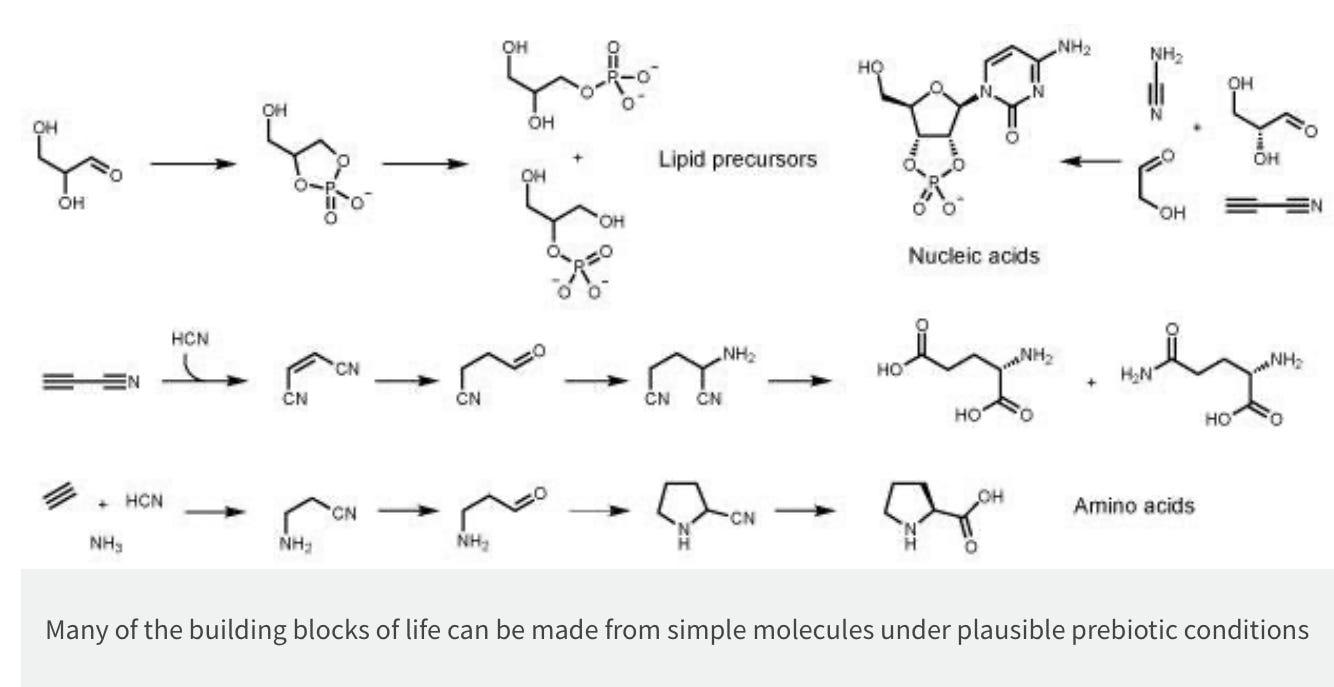Photo Credit: https://www.newscientist.com
Decoding Life’s Chemical Mystery: How Science Inches Closer to its Origins
Ever wondered about the perplexing puzzle of life’s origin? Well, you’re certainly not alone in these ponderings. Respected scientists globally have been wrestling with this enigma for centuries, attempting to draw society closer to an understanding of life’s mysterious inception. The answer, it seems, lies in the mysterious realm of chemistry.
Imagine, a world of teeming molecular interactions, complete with an intricate dance of atoms — this is the birthplace of life as we know it. A place where complex chains of chemical reactions sparked into existence, leading to that pivotal moment when non-living matter transformed into something alive.
“There’s a magic to how life began, imbued with a chemistry that has so far eluded the full understanding of humanity. But with every passing day, we are drawing a step closer to deciphering this ancient riddle, unfurling the intriguing tapestry of life’s inception.”
Today, we’re zooming in on this captivating voyage of discovery where scientists are moving ever closer to unlocking this chemical conundrum. From far-flung theories to groundbreaking experiments, prepare to immerse yourself in the captivating quest, brimming with stirring revelations and scientific exploits, for the origin of life.
Imagine yourself in a vast cosmic laboratory, where the recipes for life are being fervently scribbled down by diligent researchers on the universal chalkboard. These recipes, so elusive yet tantalizing close, hold the secret to how life came to be. Let’s delve deeper into this tantalizing pursuit.
Chemistry plays an integral role in the unwrapping of life’s earliest beginnings. At the heart of this lie nucleic acids — DNA and RNA. These life-critical molecules, the vehicles of heredity, act as the blueprint for all living organisms on Earth. But the question stands — how did these intricate and essential parts of life originate?


Photo’s 1–2 Credit: https://edu.rsc.org/feature/the-origin-of-life/2000129.article
Our journey takes us back billions of years, to a time when the Earth was a cauldron of primordial soup, teeming with a myriad of different chemical reactions. Imagine this chaotic mix of organic compounds, a potent cocktail, spurred on by environmental factors like lightning and volcanic activity.
Recent breakthroughs in laboratory experiments have shown that simple chemical compounds, when subjected to such conditions, can give rise to more complex molecules like nucleotides, the building blocks of our all-important nucleic acids. These ‘scientists’ of old — Mother Nature’s own chemists, let’s call them — were stirring together the cocktail of life, one molecular ingredient at a time.


Photo’s 1–2 Credit: https://edu.rsc.org/feature/the-origin-of-life/2000129.article
While our journey is still ongoing, these discoveries have brought us closer than ever before to understanding how chemistry transitioned to biology. It’s a labyrinth of networking reactions, a domino effect where each molecule, each reaction, played a crucial role in the unprecedented evolution of life.
In decoding this molecular dance, we’re not just uncovering our past; we’re exploring possibilities for life beyond Earth. The same universal rules of chemistry apply, whether it’s in the depths of Earth’s oceans or on the distant exoplanets orbiting far beyond our own solar system. Truly, this quest to solve the intricate chemical puzzle of the origin of life is not only a journey back in time but also a leap into the infinite mysteries of the cosmos.

Photo Credit: https://www.washingtonpost.com/climate-environment/2024/02/29/life-earth-origin-chemistry/
Together, let’s continue this exciting and significant voyage of discovery. As scientists edge closer to revealing the secret recipe of life, brace yourself for the exhilarating insights that are yet to unfold. Stay tuned, as the story of our origin continues to unravel, one chemical reaction at a time.

Table Credit: Benskin, Jason Chemical Reaction 2024 Life
- Chemistry and early life: Many scientists believe that life began in the so-called “primordial soup,” an aqueous environment rich in organic compounds.
- Miller-Urey experiment:An experiment conducted in 1952 by Stanley Miller and Harold C. Urey showed that organic compounds, including amino acids, could be created from inorganic ones, providing clues to the chemical origins of life.
- Astrobiology: The study of the origin of life also extends to other planets. This branch of science, known as astrobiology, examines the conditions under which life could arise elsewhere in the universe.
- Synthesis of organic compounds: The synthesis of organic compounds such as amino acids can occur in various environmental conditions, including deep-sea vents and outer space.
- Ribozymes: Some RNA molecules, called ribozymes, can catalyze chemical reactions, hinting towards RNA’s potential role in early biochemistry before the evolution of protein enzymes.
- Metabolism-first theories: These theories propose that metabolic processes, not genetics, were the first to emerge, focusing on how simple chemical precursors can form the complex networks seen in modern metabolism.
In conclusion, the enigma of life’s chemical start has turned into a mesmerizing journey, an intriguing puzzle that scientists are steadfastly working to piece together. From the seminal Miller-Urey experiment, unfolding the beginnings of amino acids formation, to the advancing field of astrobiology, hinting at interplanetary origins of life, we are on a path of exciting discoveries. Innovative theories, such as the ‘metabolism-first’ approach, and the suggestively pivotal role of ribozymes, narrate an evolving understanding of life’s inception.
Yet, the complexities remain manifold. While we have embraced the possibility of life being sparked in diverse environments — from the heart of a deep-sea vent to the depths of outer space — the exact mechanics of how simple chemical precursors morph into complex genetic and metabolic networks remain open to investigation. Although we may not yet hold all the answers, the significant strides we have taken so far only serve to inspire continued exploration in our quest to decode life’s most fundamental question — its origin.
. . .
If you feel like this read hit home and it’s worth a coffee for this writer, 🙂 You can buy me a coffee here. I’m forever grateful for your support. Cheers.
Video Credit: https://youtu.be/oS3MTdtjvUQ?si=Kxd8OjxTYxSdUR2m














Leave a Reply